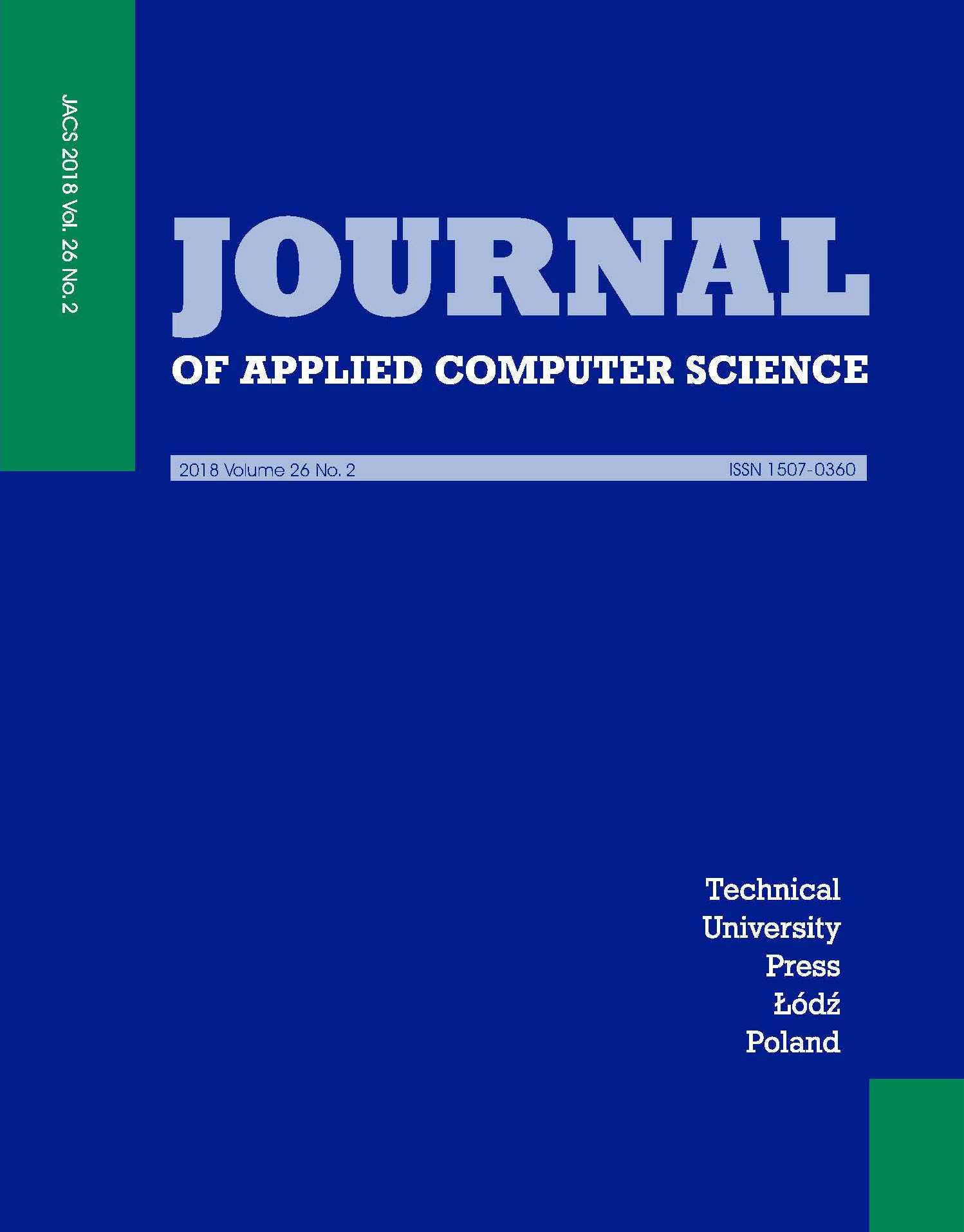Abstract
The theory that pupillary changes can reflect human psychophysical character was confirmed in several conducted studies. Authors of those studies have used devices called eye trackers in order to measure pupillary changes, blinking rate, eye movement patterns or even a gaze position. The main goal of those apparatuses is to locate the pupil on a given image using implemented pupil detection algorithms. In this paper the main focus will be set on several states of art pupil detection methods. All represent different approaches to performing the same tasks in difficult situations for ex.: low/high condition, low image resolutions or low contrast.
References
Haq, Z. A. and Hasan, Z., Eye-blink rate detection for fatigue determination, In: 2016 1st India International Conference on Information Processing (IICIP), Aug 2016, pp. 1–5.
Fitzpatrick, E., Hohl, N., Silburn, P., O’Gorman, C., and Broadley, S. A., Case–control study of blink rate in Parkinson’s disease under different conditions, Journal of Neurology, Vol. 259, No. 4, Apr 2012, pp. 739–744.
Thomas, T., George, A., and Indira Devi, K., Effective Iris Recognition System, Procedia Technology, Vol. 25, 12 2016, pp. 464–472.
Bansal, A., Agarwal, R., and K. Sharma, R., Pre-Diagnostic Tool to Predict Obstructive Lung Diseases Using Iris Recognition System, 01 2019, pp. 71–79.
Cassin, B. and Rubin, M., Dictionary of Eye Terminology, Triad Pub., 2006.
García-Ruiz, P., Fontán, A., Cenjor, C., Ulmer, E., Gómez-Tortosa, E., Sanchez Pernaute, R., Rojo, A., and Yébenes, J., [Disorders in gaze saccades in Huntington disease. Clinical correlations], Der Nervenarzt, Vol. 72, 06 2001, pp. 437–40.
Molitor, R., Ko, P., and Ally, B., Eye Movements in Alzheimer’s Disease, Journal of Alzheimer’s disease : JAD, Vol. 44, 09 2014.
Bradley, M. M., Miccoli, L., Escrig, M. A., and Lang, P. J., The pupil as ameasure of emotional arousal and autonomic activation, Psychophysiology, Vol. 45, No. 4, Jul 2008, pp. 602–607, 18282202[pmid].
Leknes, S., Wessberg, J., Ellingsen, D.-M., Chelnokova, O., Olausson, H., and Laeng, B., Oxytocin enhances pupil dilation and sensitivity to ‘hidden’ emotional expressions, Social Cognitive and Affective Neuroscience, Vol. 8, No. 7, 2013, pp. 741–749.
Silk, J. S., Dahl, R. E., Ryan, N. D., Forbes, E. E., Axelson, D. A., Birmaher, B., and Siegle, G. J., Pupillary reactivity to emotional information in childand adolescent depression: links to clinical and ecological measures, Am JPsychiatry, Vol. 164, No. 12, Dec 2007, pp. 1873–1880, 18056243[pmid].
Vasquez-Rosati, A., Brunetti, E. P., Cordero, C., and Maldonado, P. E.,Pupil-lary Response to Negative Emotional Stimuli Is Differentially Affected in Meditation Practitioners, Front Hum Neurosci, Vol. 11, May 2017, pp. 209–209, 28515685[pmid].
Timm, F. and Barth, E., Accurate Eye Centre Localisation by Means of Gradients, In: VISAPP, 2011.
́Swirski, L., Bulling, A., and Dodgson, N. A., Robust real-time pupil trackingin highly off-axis images, In: Proceedings of ETRA, March 2012.
Viola, P. and Jones, M., Rapid object detection using a boosted cascade of simple features, In: Proceedings of the 2001 IEEE Computer Society Conference on Computer Vision and Pattern Recognition. CVPR 2001, Vol. 1, Dec2001, pp. I–I.
Fischler, M. A. and Bolles, R. C., Random Sample Consensus: A Paradigm for Model Fitting with Applications to Image Analysis and Automated Cartography, Commun. ACM, Vol. 24, No. 6, June 1981, pp. 381–395.
Fuhl, W., Kübler, T., Sippel, K., Rosenstiel, W., and Kasneci, E., ExCuSe: Robust Pupil Detection in Real-World Scenarios, Vol. 9256, 09 2015.
Mohammed, G., Hong, B., and Alkazzaz, A., Accurate Pupil Features Extraction Based on New Projection Function. Computing and Informatics, Vol. 29, 01 2010, pp. 663–680.

